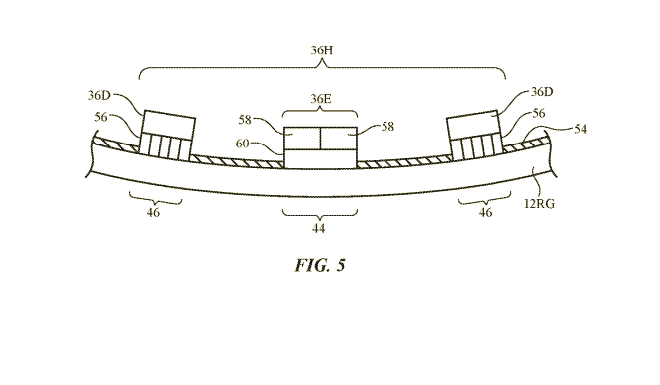Apple Watch in the future will be thinner thanks to the use of a curved sensor
- Tram Ho
A new patent registered by Apple reveals a potential solution the company is considering addressing this issue. Accordingly, Apple intends to use curved film-type sensors to help the Apple Watch become thinner and less bulky.
In the patent, Apple has pointed out the challenges of trying to include an optical sensor in the device. Apple Watch currently uses an optical sensor to measure the user’s heart rate, and this sensor is located on the bottom of the watch. The company also mentioned that ” the optical components used to give an electronic device the desired functionality may be too cumbersome to be integrated into an electronic device “.

Next, the patent describes an optical sensor placed inside a protective layer. This protective layer has a transparent section that allows light to pass through to enter the sensor and be reflected back from the user’s wrist or any part of the body. The reflected rays will travel to the optical splitters ” after passing the light-controlled components “.

These light-controlling components are arranged inside a bent component, as shown above. Thanks to this layout, engineers can save a considerable amount of space without having to interfere with the function of the optical sensors. Furthermore, light control components can be fabricated with ” lamination bent light control films “. Interestingly enough, this light control module can be pressed into a variety of shapes depending on the layout of surrounding components.
Over the years, the Apple Watch hasn’t changed significantly in terms of design and size. Even the weight of the watch has been maintained at roughly the same level across all generations. Perhaps, this latest patent will pave the way for a breakthrough to emerge and help the Apple Watch become thinner than ever.
Reference: iPhoneHacks
Source : Genk
